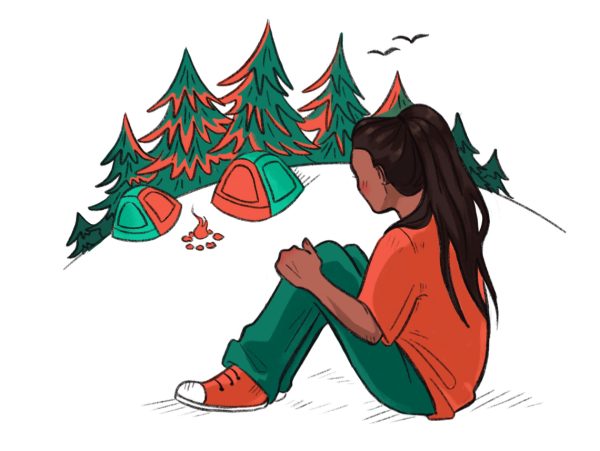
It’s no secret that today’s outdoor recreation scene is dominated by a particular demographic. Just ask anyone who has ever been to a ski area. Chances are you’ll hear that the snow isn’t the whitest thing about that mountain. However, this discrepancy isn’t exclusive to the activity of skiing. You don’t have to look too carefully to notice that the trend extends to the world of outdoor recreation at large.
Outdoor recreation is a broad and vague term. It can describe anything from a pickup soccer game at the park to whitewater rafting in a remote section of the White Salmon River. What I’ve noticed in my time getting more involved in the outdoors is that the further you get out into the wilderness for a particular activity, the less likely you are to happen across another person of color. Personally, I could probably count on one hand the number of times I’ve run into another person of color on the trail.
In the U.S., some may be tempted to chalk these numbers up to population statistics. After all, we live in a mostly white country, with a majority that only increases as you get into rural areas (where the wilderness tends to be most convenient). But the disparity of racial demographics in outdoor recreation is larger than simply population percentage. Even the activities that require more remote locations are enjoyed by those from cities, suburbs and rural areas alike. Thus, it is not as simple as population percentage or convenience.
Clearly, it is more than just a matter of demographics. Historically, outdoor activities do not belong to any one ethnic group. People from cultures all over the world have hiked mountains and navigated rivers or forests for millennia. At the risk of stating the obvious, some of the biggest current barriers for many people are economic. The cost of gear and transportation for many activities can add up to thousands of dollars, not to mention the economic freedom required to schedule time for these activities. For those who lack generational wealth, a lot of outdoor recreation is simply not affordable.
Even so, painting the disparity as something that’s just because of money would be reductive. According to Cory Maria Dack, a career wilderness guide from Minnesota who has been working in the field of outdoor recreation since 2004, the problem lies within a lack of inclusivity.
“There’s a lot of racially-based microaggressions going on with insular knowledge [of] what it’s like to be an outdoorsy person,” Dack said.
Dack got her start working as a summer camp counselor, facilitating children with an experience that she never had when she was growing up. Her identity as a person of color was a defining part of her time in the outdoors.
“20 years ago, the first time I showed up at summer camp I felt very unwelcome,” Dack said. “I was the only brown person there. But I don’t think back then people were really talking about that openly.”
Dack’s experience as a person of color in the outdoors is far from uncommon. Speaking for myself, before coming to Whitman, I had never been camping or backpacking, and I didn’t know how to ski. I have always loved being outside and was curious about getting involved in these activities, but it’s daunting to learn something new. Plus, when you’re trying to learn something and everyone you see doing it looks nothing like you, it’s an isolating feeling. That feeling often creates a sense of discouragement that drives many people of color from the field of outdoor recreation altogether.
This isn’t how it has to be. Cory Maria Dack and others like her are doing the work of creating representation.
“We need more brown people to be camp counselors and canoe guides so that the brown kids see themselves reflected in leadership,” Dack said.
This goal was part of her 2022-2023 project Decolonizing Thru Paddling, in which she thru-paddled the entire Mississippi River while accompanied in segments by friends who also have marginalized identities.
“[We aimed to] be in touch with the water and land the whole way down instead of just trying to break a speed record,” Dack said in regards to the project.
While representation is important, the bonus of making outdoor recreation more welcoming does not just lie on people of color. It is a process that involves everyone. Progress has been made in recent years, but there is still a long way to go.


